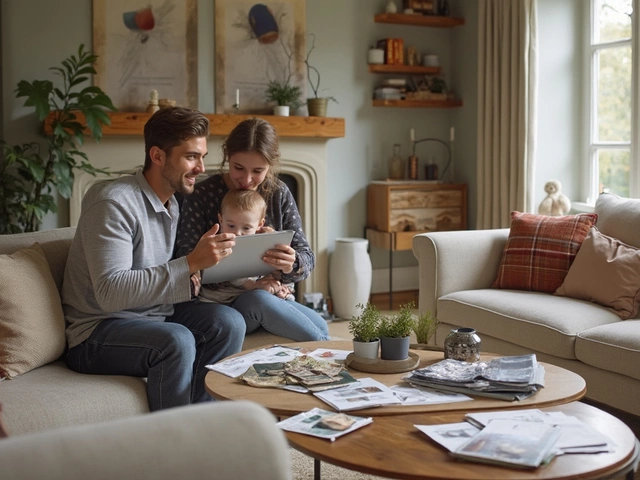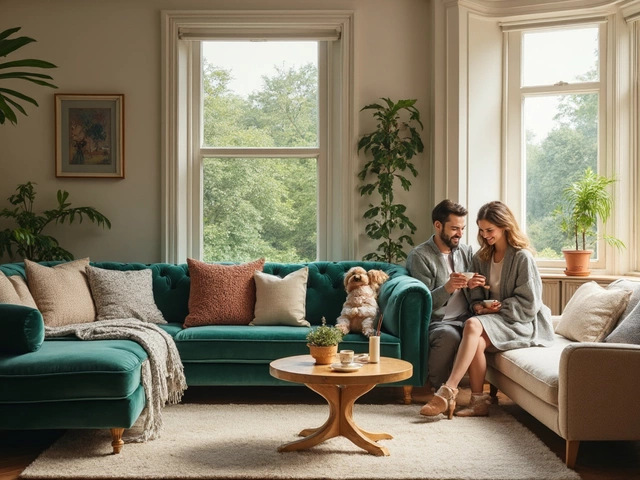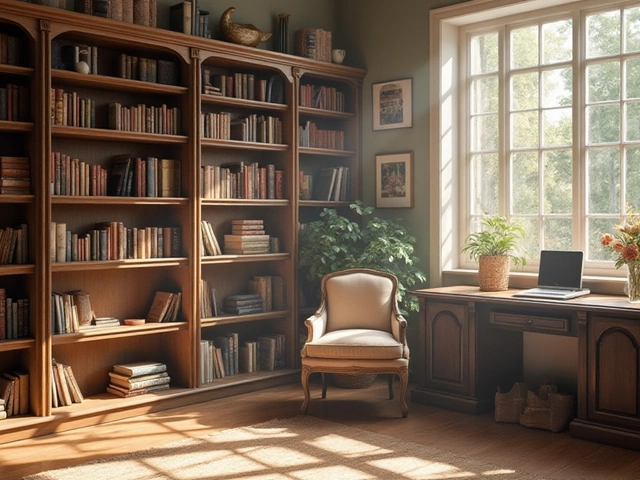Picture this: you’ve just scored a great deal on a new TV, but the stand is missing, or maybe the old one just snapped after a dramatic vacuuming incident. You’re stuck with a screen and nowhere to place it. Sound familiar? You’re not alone. More folks than you’d think end up with a TV and no sensible way to stand it up. Yes, wall mounting is obvious, but not everyone’s a fan of drilling holes, especially if you’re renting, living with nervous landlords, or just don’t want a commitment. Let’s break down all the alternative ways you can confidently prop up your TV, minus the headache and minus the doomsday scenario of watching it faceplant onto the carpet.
Understanding Safe TV Support Without a Stand
Straight up, safety beats style every time. TVs keep getting bigger but alarmingly lighter. That sounds handy, except these skinny screens are alarmingly easy to tip over. In New Zealand and Australia, ACC actually recorded close to 300 emergency visits last year alone just from falling TVs—most accidents involved kids or pets. That’s a lot of screens and screams. Whether you’re making do for a week or planning a more permanent solution, you’ve got to secure that thing.
So, what are your options? The first instinct might be to just lean it against a wall, but that’s asking for disaster. Instead, hunt around the house for sturdy furniture with a broad, level surface—think a low cabinet, thick coffee table, or a solid bookshelf turned sideways. The golden rule? The base should be wider than your TV’s width with at least a 10cm buffer on both sides, so there’s basically no overhang.
If you’re short on proper furniture, get creative. Heavy-duty storage trunks, wide timber crates, or old dressers work surprisingly well. Just make sure they won’t rock when nudged; give them a test shake. Avoid glass-topped tables—broken glass plus broken TV equals a day nobody wants.
Another tip: always set your TV low when you don’t have a stand. Lower height means a shorter fall if anything goes wrong. Propping a 65-inch TV at chin-level on a flimsy table? You’re almost daring gravity to test its limits.
Next, anchoring. Even on a stand-in table or bench, your TV is still way too easy to topple. Most modern TVs have VESA mounting holes at the back, even if you’re not wall-mounting. Run a sturdy strap (even luggage straps will do) from those holes to the back or base of the supporting furniture. If you’ve got tiny humans or pets, don’t skip this step.
Check out this quick comparison of furniture options for TV support:
| Support Option | Max Recommended TV Size | Stability | Availability |
|---|---|---|---|
| Low Cabinet | Up to 75" | High | Common |
| Coffee Table | Up to 55" | Medium | Very Common |
| Wide Bookshelf | Up to 50" | Medium | Moderate |
| Storage Trunk | Up to 65" | High | Less Common |
Have you got a little DIY spirit? Head to your local Mitre 10 and ask for heavy-duty velcro strips. Fix some strips to the bottom edge of the TV and the surface it’s resting on. It’s not earthquake-proof, but it guards against accidental nudges and excited Labrador tails.

DIY Solutions and Creative Workarounds
Now, if you want your setup to look like it belongs in someone’s actual living room (and less like a student flat), there are creative DIY options. For those handy with a drill, temporary legs are surprisingly easy to build. Home improvement stores here in Auckland usually sell adjustable furniture legs for under $20. Screw those into a sturdy piece of plywood, then attach your TV using its VESA screw holes. Just double-check your TV’s weight rating. It will look neat and tidy, and you can paint the base to match your décor.
If woodworking isn’t your thing, you can buy universal replacement stands online. HEYMIX, Perlesmith, and North Bayou are popular brands in NZ for these stands. They’re basically two metal legs that fit into your TV’s VESA holes, giving you instant stability without drilling into the wall. If you’re in a pinch, most electronics stores stock these for around $30-$60, and you’ll usually have them in the post within a day or so.
There’s also the furniture hack approach. Grab a couple of oversized, heavy-duty command hooks or L-brackets. Mount them solidly to the back of your supporting furniture at roughly the same height as the bottom of your TV. This creates a barrier the TV can’t slide over. It’s not pretty, but it works when you’re trying to keep things upright for a weekend party.
Want full-on DIY? People get pretty creative with cinder blocks (painted, of course) and wide timber planks. Lay two painted blocks, drop a pine panel on top, and you’ve got a super stable bench for your TV and gaming gear.
Leaning towards the high-tech? There are actually inflatable stands designed for big TVs—think travel pillow meets heavy-duty air bed. You inflate them, wedge your TV gently into the grooves, and get a shock-absorbent base that holds screens up to 60-inches. Not the norm, but they’re a conversation starter.
And sometimes, it’s easier to borrow than to build. Community Facebook groups and Neighbourly in Auckland are loaded with people giving away old TV stands after an upgrade. Search by your TV’s brand and screen size, and you’ll probably get a hit in an afternoon.
Here’s a fast cheat-sheet:
- Check VESA compatibility if buying legs or a replacement stand
- Always test stability with gentle nudges before letting pets or kids near
- Keep cords tidy and out of the way so nobody trips and yanks the TV
- Add slip-proof mats under makeshift furniture
- Aim to anchor or restrain the TV (straps, brackets, velcro)

Permanent vs. Temporary Fixes: Safety, Style and Comfort
So now you know, it’s not just about plonking your TV down and calling it a day. You have to think long term, especially if you care about keeping your screen in one piece and your living room looking semi-sleek. People who pick temporary fixes like adjustable stands or furniture hacks often do so because they’re renting or plan to move soon. It’s no secret that Auckland rents are wild, and with the average Kiwi moving house every 3.5 years, portability makes sense.
But if you’re planting roots, it’s smart to look at something a bit more secure and stylish. Some folks have gotten crafty with custom joinery—using pine, rimu, or even recycled wood from old workshop tables to create bespoke TV benches that match the rest of their furniture. You’ll spot even home-made setups at the Avondale or Takapuna markets on the weekends, often with neat cable cutouts built in. Get a friend with basic carpentry skills, and you’ll have something better and safer than most store-bought units.
On the flip side, don’t underestimate the value of simple solutions. Most TVs in 2025 are slimmer than a banister and have low-profile feet you can pick up online. These legs save the day when you need to set the TV up for a movie night or that big All Blacks test. If you’re nervous about scratching your table, stick felt pads under each foot for peace of mind. It’s a little thing, but it keeps those annoying gouges off your grandfather’s old oak coffee table.
People often ask if there’s a “wrong” way to prop up a TV. The answer: yes! Propping a screen with random objects—books, laundry, beanbags, or kitchen stools—might feel clever, but these are risky as heck. They slide, tip, and can’t handle the weight, and one knock could end your Netflix binge in seconds. Avoid anything that can move easily or doesn’t give rock-solid support across the whole base of the TV.
It’s wild, though, how creative people get. I met a local in Devonport who used old concrete pavers layered on vintage crates and topped with a thick, woven wool blanket. Super steady, and it doubled as storage for his record collection underneath. Why not make it work for your space, too?
Beyond looks and stability, make sure you run all cords safely away from the TV zone so nothing tugs or gets yanked, which is often the real culprit behind wobbly setups turning into accidents.
Before you commit to a solution, ask yourself: is it safe for kids and pets? Is it at comfortable viewing height? Will it stay sturdy for longer than a summer? If yes, then you’re onto a winner. If not, swap it out. There’s no shortage of creative, affordable ways to safely prop up your TV—even when you arrive home from the store and the stand is nowhere in sight. Happy watching!





